Google Shopping campaigns are a powerful tool for e-commerce businesses to showcase products directly to customers searching for them. Unlike traditional text ads, Google Shopping ads display product images, prices, and store names, making them highly effective in driving sales. However, maximizing sales requires strategic optimization.
In this guide, we’ll explore how to optimize your Google Shopping campaigns for maximum sales, helping you achieve a higher return on investment (ROI) and gain a competitive edge.
What Are Google Shopping Campaigns?
Google Shopping campaigns allow retailers to promote products through visually appealing ads that appear at the top of search results. These ads are powered by product data from a Merchant Center feed, including images, titles, descriptions, and prices.
Why Use Google Shopping Campaigns?
- Higher Click-Through Rates (CTR): Visual product ads attract more attention.
- Qualified Leads: Shoppers who click are more likely to purchase.
- Comprehensive Product Details: Display images, prices, and store names upfront.
If you’re new to Google Shopping or need expert guidance, consider hiring a digital marketer to maximize your ad performance. Check out our digital marketing services here.
How to Set Up Google Shopping Campaigns
Before diving into optimization strategies, it’s crucial to have a well-structured campaign setup. Follow these steps:
1. Create a Google Merchant Center Account
Your product data is managed through Google Merchant Center, where you’ll upload your product feed. Ensure that:
- Product details are accurate and up to date.
- Images are high quality and meet Google’s requirements.
- Prices and availability are consistent with your website.
2. Link Google Merchant Center to Google Ads
This integration allows you to run Shopping Ads using your product feed.
3. Set Up Your Campaign in Google Ads
- Choose a Campaign Type: Select “Shopping” as the campaign type.
- Set a Budget and Bidding Strategy: Start with a manageable budget and choose a bidding strategy like Maximize Clicks or Target ROAS (Return on Ad Spend).
- Organize Product Groups: Group similar products together for better management and performance analysis.
If you need help setting up or optimizing your campaigns, contact us for professional assistance.
Optimizing Product Feed for Maximum Sales
Your product feed is the foundation of your Google Shopping campaign. Here’s how to optimize it:
1. Optimize Product Titles
Product titles significantly impact visibility. To optimize them:
- Include relevant keywords but avoid keyword stuffing.
- Use a clear structure: Brand + Product Type + Key Attributes (e.g., color, size).
- Keep titles within 70 characters for better display on mobile devices.
2. Write Compelling Descriptions
Product descriptions should:
- Highlight unique selling points and key features.
- Include relevant keywords naturally.
- Encourage users to click by addressing their needs or pain points.
3. High-Quality Images
- Use high-resolution images with a plain white background.
- Show the product clearly without any logos or watermarks.
- Include multiple images showing different angles and use cases.
Budgeting for Success: How Much Should You Spend on Google and Meta Ads?
4. Accurate Pricing and Availability
- Ensure prices are consistent across your website and feed.
- Update availability status (in stock, out of stock) regularly.
For professional assistance with product feed optimization, consider hiring an expert. Hire a developer here.
 Structuring and Organizing Your Campaign
Structuring and Organizing Your Campaign
A well-organized campaign structure allows better control and optimization. Here are some tips:
1. Segment Product Groups
Group products by categories, brands, or custom labels to analyze and optimize performance. For example:
- High-margin products can have a higher budget.
- Best-selling products can be prioritized for maximum exposure.
2. Use Custom Labels
Custom labels help categorize products based on performance metrics such as:
- Best Sellers: Products with high sales volume.
- Seasonal Items: Products relevant to specific seasons or holidays.
3. Implement Negative Keywords
Avoid irrelevant traffic by adding negative keywords. This prevents your ads from showing for unrelated searches, saving your budget for more qualified leads.
If you’re unsure how to structure your campaign effectively, hire a digital marketer to optimize your setup.
Bidding Strategies for Maximum ROI
Choosing the right bidding strategy is crucial for maximizing sales. Consider the following options:
1. Manual CPC (Cost-Per-Click)
- Offers maximum control over bids.
- Ideal for beginners or when testing new campaigns.
2. Enhanced CPC
- Adjusts bids in real-time based on the likelihood of conversion.
- Useful for campaigns with consistent performance history.
3. Target ROAS (Return on Ad Spend)
- Automatically adjusts bids to maximize revenue based on your target ROAS.
- Recommended for advanced users with historical conversion data.
4. Maximize Clicks or Conversions
- Automatically sets bids to get the most clicks or conversions within your budget.
- Best for brand awareness or lead generation campaigns.
Monitoring and Analyzing Campaign Performance
1. Track Key Performance Indicators (KPIs)
Focus on KPIs such as:
- Click-Through Rate (CTR): Measures ad relevance and engagement.
- Conversion Rate: Percentage of clicks that lead to purchases.
- Cost Per Conversion: Amount spent per completed sale.
- ROAS (Return on Ad Spend): Revenue generated for every dollar spent.
2. Use Google Analytics
Connect Google Analytics with Google Ads to get detailed insights into user behavior, including:
- Bounce rates and session duration.
- Conversion paths and attribution models.
The Role of Creative Content in Driving ECommerce Ad Success
3. A/B Testing
- Test different ad creatives, titles, and descriptions.
- Experiment with bidding strategies and budget allocations.
Advanced Optimization Techniques
1. Smart Shopping Campaigns
Leverage Google’s machine learning to automate bidding and targeting, maximizing conversions.
2. Dynamic Remarketing
Show customized ads to users who previously visited your website, increasing the chances of conversion.
3. Geo-Targeting and Device Adjustments
- Adjust bids based on location, device type, or time of day.
- Optimize for mobile users by ensuring a responsive landing page design.
If you need expert help with advanced optimization, hire a designer to enhance your ad creatives.
Conclusion: Maximize Your Sales with Google Shopping
Optimizing your Google Shopping campaigns involves strategic planning, continuous monitoring, and data-driven adjustments. By implementing these best practices, you can:
- Increase visibility and CTR.
- Drive more qualified leads and maximize sales.
- Achieve a higher ROI and sustainable business growth.
Whether you need assistance with campaign setup, product feed optimization, or advanced strategies, our team of experts is here to help. Contact us today to take your Google Shopping campaigns to the next level.

I am Ashutosh – a seasoned digital marketer, bringing digital transformation to businesses, complementing businesses’ growth via generating qualified leads, drive site inbound traffic via organic and inorganic approach, & build their brands through useful, well-designed marketing strategies and Marketing Automation implementation via Chat GPT, HubSpot & Zoho.



 Structuring and Organizing Your Campaign
Structuring and Organizing Your Campaign



